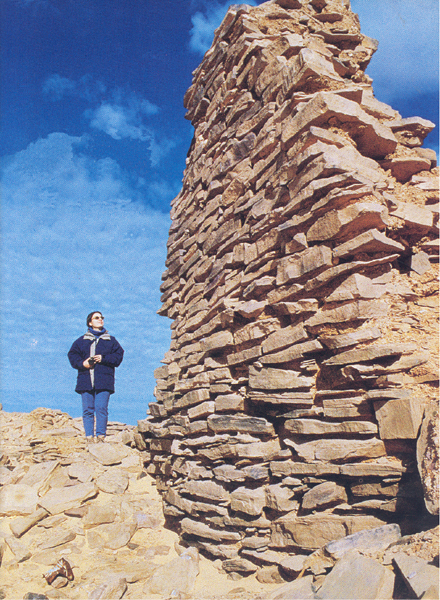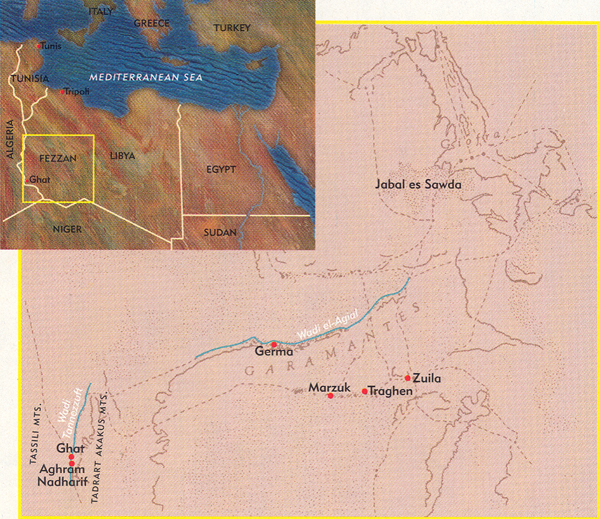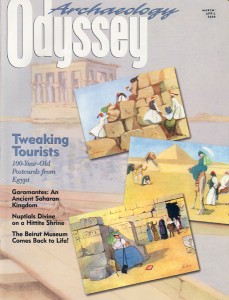

It is safe to say that few, if any, readers of Archaeology Odyssey have heard of the Garamantes. For about a thousand years, from about 500 B.C. to 600 A.D., however, they lived in the southwestern part of what is now Libya; then they disappeared from history—not long before the Arab-Islamic invasion. The area they inhabited, known today as Fezzan, is called Phasania in Roman sources. It includes vast areas of desert with large oases, as well as mountain ranges cut by deep wadis.
What first attracted modern investigators to the area was the prehistoric rock art in the Tadrart Akakus mountain range. In the 1950s a team from the University of Rome, under the direction of Italian rock-art specialist Fabrizio Mori, began recording and interpreting these important paintings, which are now included in UNESCO’s list of World Heritage sites. Mori was soon joined by archaeologists who specialized in prehistoric periods. By digging stratified deposits both in the caves and in open-area sites, they were able to place the rock-art sites in their proper environmental and cultural context. In the early 1990s, they were joined by the brilliant geo-archaeologist Mauro Cremaschi, who systematically surveyed and recorded over 1,300 sites.
Already a library member? Log in here.
Institution user? Log in with your IP address.

